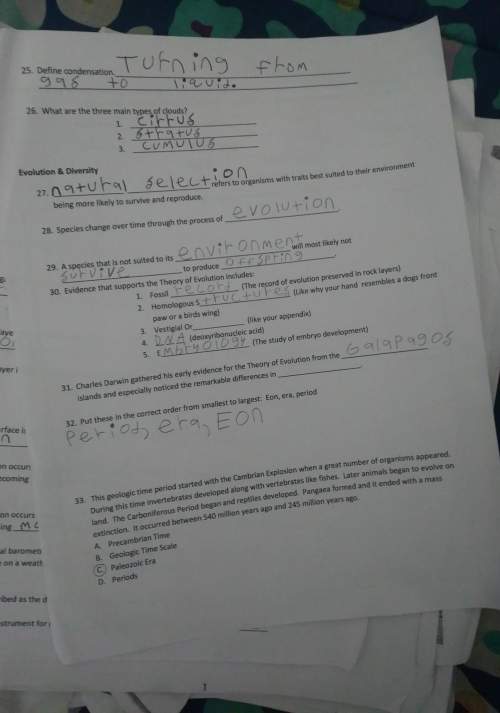
Physics, 23.07.2020 19:01, daniel7363
Unpolarized light enters a polarizer with vertical polarization axis. The light that passes through passes another polarizer with transmission axis at 40 degrees to the horizontal. What is the intensity of the light after the second polarizer expressed as a fraction of the original intensity

Answers: 3
Other questions on the subject: Physics

Physics, 22.06.2019 00:00, anna40794
(science)study the following ocean currents map. an ocean currents map is shown. on the map the locations for san diego, california and savannah, georgia are marked. there is a looping current from the north past san diego and a looping current from the south near savannah which statement is most likely correct about the average temperatures in san diego, california as compared to savannah, georgia? it is higher in savannah because of the cool ocean currents from the south. it is higher in savannah because of the warm ocean currents from the north. it is lower in san diego because of the warm ocean currents from the south. it is lower in san diego because of the cool ocean currents from the north.
Answers: 2

Physics, 22.06.2019 07:30, alejandro1102
The charge on a charged sphere is: a)concentrated at its centerb)distributed uniformly throughout its volumec)clustered on its centerd)distributed uniformly over its surface
Answers: 1

Physics, 22.06.2019 16:40, jcblake
Beryl states that insulation with the smallest possible thermal conductivity is best to keep a house warm in winter, but worst for keeping a house cool in summer. sapphire insists the reverse is true: low thermal conductivity is good in the summer, but bad in the winter. which one, if either is correct? a. beryl, because low thermal conductivity results in low heat transfer. b. beryl, because low thermal conductivity results in high heat transfer. d. sapphire, because low thermal conductivity results in high heat transfer. e. neither, because low heat transfer is desirable both in summer and in winter.
Answers: 2

Physics, 22.06.2019 20:30, nae467
Suppose a force of 60 n is required to stretch and hold a spring 0.1 m from its equilibrium position. a. assuming the spring obeys hooke's law, find the spring constant k. b. how much work is required to compress the spring 0.5 m from its equilibrium position? c. how much work is required to stretch the spring 0.6 m from its equilibrium position? d. how much additional work is required to stretch the spring 0.1 m if it has already been stretched 0.1 m from its equilibrium? a. kequals 600
Answers: 2
Do you know the correct answer?
Unpolarized light enters a polarizer with vertical polarization axis. The light that passes through...
Questions in other subjects:

Mathematics, 20.06.2019 18:04


Mathematics, 20.06.2019 18:04



Mathematics, 20.06.2019 18:04

Social Studies, 20.06.2019 18:04

Biology, 20.06.2019 18:04


Mathematics, 20.06.2019 18:04







